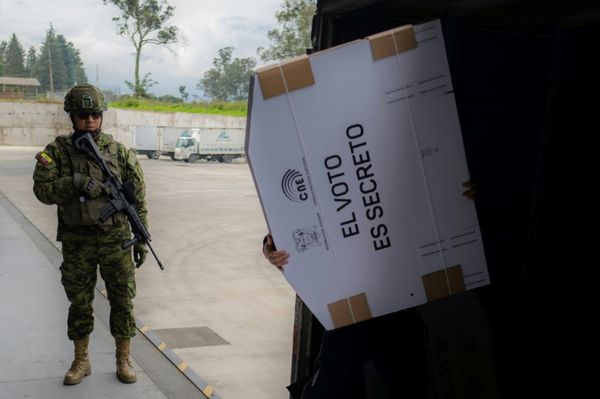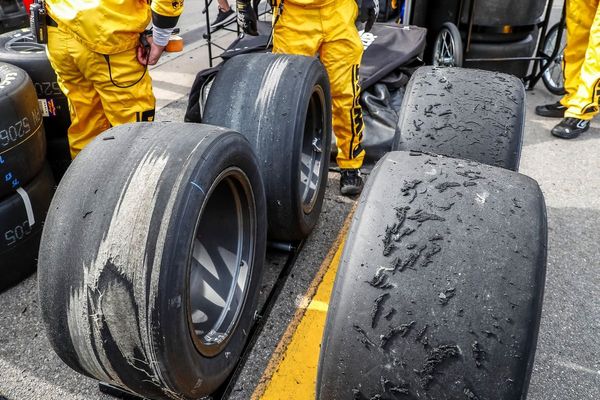
Two oils on canvas hang together, strikingly similar, in the first room of the National Gallery of Ireland’s new show. Both titled Composition, they date from 1924 and 1925. They’re cubist still lifes, with the regular, geometric patterns and contrasting colour schemes favoured by many early 20th-century modernists, Marcel Duchamp and Juan Gris among them.
The paintings are clearly by the same hand. Except they’re not. The 1924 work, featuring what might be a fried egg, or might be an easel, is by Evie Hone; the piece from the following year, centred on a chessboard, is by her best friend, Mainie Jellett. These two women, virtually unknown outside their homeland, and not well-known even there, revolutionised art in Ireland by introducing modernism.
In the deeply conservative country that it was at the time, that didn’t always meet a favourable response. And yet they soldiered on, buoyed up by one another across several decades, plying their craft, and turning their hands to different styles and art-forms.
So the exhibition feels very eclectic. Here there’s cubism; there, abstraction; in the next room, we’re back to figuration. In another room landscapes, and elsewhere devotional religious art. Most are paintings, but one room is filled with the stained glass that Hone spent part of her career focusing on – she made commissions for public buildings and churches alike.
But there is one element that unites almost all the 90 artworks in the exhibition, and it’s colour. Bright colours, primary colours; rich colours, strong colours; clashing colours, harmonious colours: they sing out of every room, and without knowing anything else about the women who put them together, they tell you that this pair believed in life and believed in art.
They were both born in Dublin, into well-to-do middle class families. While they met for the first time in London during the first world war, this exhibition traces their story from the early 1920s, when they moved to Paris to train under André Lhote, and then Albert Gleizes, whose work exploring abstraction they very much admired. He didn’t take students, but the pair had made up their minds: he remained in touch with them all their lives, and much is made in the show of the importance of his influence on their work. It was a two-way street – Gleizes acknowledged the importance of Hone and Jellett on his own oeuvre – but art history in its inimitable way has remembered him, and airbrushed them out.
For now, though, they’re back. The quality of the art is as eclectic as the styles. The standout piece is Jellett’s Decoration (1923): fantastically well composed, immensely pleasing, this piece pays homage to the work of the Renaissance artists whose work both women adored (they knew it mostly through reproductions), painted in tempera on wood with gold leaf to reference that period of art history. But it’s more than a homage: it’s a marrying together of old and new, a gorgeous abstract depiction of the ages-old Madonna and Child, contained within the shape of a Trecento altarpiece, with a pointillist background.
Sheer genius, and considered today to be the single most significant modernist painting in Irish history, it went down like a ton of bricks: writer George “AE” Russell made the astonishing remark that there was nothing much to say about it. The following year, 1924, Jellett and Hone had a joint show – the current show in Dublin is only the second time their work has been shown together – which was met, again, with much criticism.
The Irish Times used the phrase “freak pictures” in a review, and Russell again had a field day, referring to their work as “artistic malaria”. It all weighed heavily on them both, so much so that it was almost certainly a factor in Hone’s decision to enter an Anglican convent in Cornwall in 1925, much to the horror of Jellett, who was left alone trying to convince the Irish art world of the importance of modernism.
Happily Hone’s life as a nun was short-lived, and just over a year later Jellett went to retrieve her and return her to her primary vocation as an artist. But religion remained a central theme, for Hone – who later in her life became a Catholic – and also for Jellett, whose other works shown here include a striking Deposition (1939) and an intense crucifixion titled The Ninth Hour (1941).
Hone, though, would mostly pour her religious feelings into her stained glass, using her cubist training and love of strong colour to great effect in a series of windows including one often-seen on Irish TV, My Four Green Fields, as it’s installed in the Department of the Taoiseach (having been made originally for the 1939 New York World’s Fair) providing a backdrop to many a government statement. The window, bringing the symbols of Ireland’s four provinces – Ulster, Munster, Leinster and Connacht – together, was one of her greatest triumphs.
But an even more magnificent example of her stained glass is in England, and sadly behind closed doors (excepting occasional public tours of the college). It’s a huge (almost 1,300 sq ft) window in Eton College chapel, and it was commissioned to replace a window destroyed by bombing during the second world war. The window, showing the Last Supper in the lower section and the crucifixion above, is regarded as one of Britain’s finest 20th-century examples of stained glass. In Dublin we get only a glimpse of its splendour via a watercolour study Hone made in 1950.
By then, Jellett had died, aged 46, of cancer. Hone visited her in the nursing home on her last night. Neither woman had ever married; and while there is no suggestion they were a couple, they clearly filled a role that might be called a partnership in each other’s lives. Jellett had spent her final years much influenced by Chinese art, after a visit to an exhibition at London’s Royal Academy. Hone, despite the legacy of childhood polio which affected her throughout her life, continued to travel in France and Italy – as works here attest – and painted the woods and landscape around her home in Marlay in the Dublin hills.
By the end of their careers, the women – whose work had been so similar in the early days – had each found her own style, with Hone’s intuitive, freer approach contrasting with Jellett’s much more precise attention to detail. Convergence, divergence and a friendship that brought the stirrings of the great changes in Ireland that continue to play out to this day.
• Mainie Jellett and Evie Hone: The Art of Friendship is at the National Gallery of Ireland, Dublin, from 10 April to 10 August







